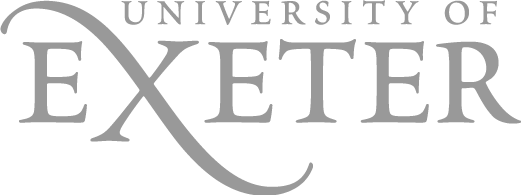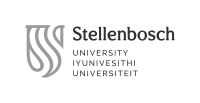S2423 Natural and Cultural Resources Diplomacy and Human Rights
Professors
Schedule
Course description
The growing number of conflicts that are affecting various parts of the world require a more structured diplomatic approach to properly face them. No longer States (and their traditional approaches) alone are capable to manage a growing geopolitical complexity; in fact, new actors (e.g. NGOs, Universities, large companies) are becoming relevant stakeholders.
In particular, cultural and natural heritage are becoming stakes of growing importance and, in many places also reasons of potential conflicts.
The course will combine an initial part dedicated on the main theoretical and operational frameworks on human right-based approach to the international relationship and their conflict resolution role.
The central part of the course is designed to provide students with a series of case studies of international relevance for the cultural diplomacy and human rights. Each of them will be illustrated with the help of international experts and analyzed from a critical point of view, considering alternative solutions and their respective relevance for the local economies.
The final part will guide students to work in groups, each of them focused on a different concrete case to be chosen by them.
Structure of the course
The course is structured in modules, dedicated to (a) theoretical introduction and (b) specific cases to be analyzed.
After a general introduction to the main principles of Natural and Cultural Heritage Diplomacy and Human Rights (module I), a central part of the course (module II) is dedicated to the analyses of specific case studies from different parts of the world, namely: (1) the City of Bethlehem (Palestine) and its tangible and intangible heritage; (2) the Omo Valley (Ethiopia) and how damming the Omo River could stop the flow of Ethiopia’s cultural diversity; (3) the Mount Moroto (Karamoja), a pilot project for a UNESCO Biosphere Reserve; (4) Yasuni UNESCO Biosphere Reserve (Ecuador), where the fatal trade-offs between economic development and the destruction of biodiversity and climate change drivers emerge.
The course duration is of 36 hs of lectures (displayed on 12 weeks) and 4 hours of co-curricular activities; it is structured in weekly modules, each of them dedicated to a specific topic.
The final module will be dedicated to students working groups and their assignment presentations.
Course organization and supervision
The overall structure of the course and its thematic organization has been designed by Alberto Lanzavecchia and Giorgio Andrian (University of Padova). For each of the specific module, external experts will be invited to share her/his own experience with the students.
Evaluation
Class participation – Overall class participation, in terms of both attendance and interaction, will count for 10% of the final grade. 20% will be given by the tests which will be assigned at the end of each session.
Midterm assignments will be given on an individual basis – 30% of the final grade
Final project – There will be a group project to develop, to present in a written group report and through an oral presentation in class – 40% of the final grade.
Syllabus
MODULE I – NATURAL AND CULTURAL RESOURCES DIPLOMACY – INTRODUCTION
Week 1
Lecture 1
Introduction to the Course, its Program, topics and assignments
Prof. Giorgio ANDRIAN (University of Padova)
Lecture 2
The role of the UN system in fostering the natural and cultural heritage diplomacy
Prof. Giorgio ANDRIAN (University of Padova)
Required Readings:
www.unesco.org; www.unep.org; www.undp.org
Week 2
Lecture 3
Introduction to UNESCO and its role in Cultural and Natural Heritage Diplomacy
Prof. Giorgio Andrian and UNESCO Venice Office expert
Lecture 4
The role of UNESCO in the post-war reconstruction. The case of Bosnia and Herzegovina
Prof. Giorgio Andrian and Mr. Sinisa Sesum, UNESCO UNESCO Head of Office, Antenna Office in Sarajevo
Required Readings: https://www.unesco.org/
The UNESCO Venice Office: https://en.unesco.org/fieldoffice/venice
MODULE II – HUMAN RIGHTS: THEORETICAL AND CONCEPTUAL FRAMEWORKS
Week 3
Lecture 5
Human Rights: conceptual and operational frameworks
Ms. Elifcan Ozbek, Human Right Centre, University of Padova
Lecture 6
Environmental Rights
Prof. Alberto Lanzavecchia, Human Right Centre, University of Padova
Required Readings: https://unipd-centrodirittiumani.it/en/
MODULE III – NATURAL AND CULTURAL HERITAGE AT RISK
Week 4
Lecture 7
The case of Ethiopia (Omo Valley)
Prof. Alberto Lanzavecchia, Human Right Centre, University of Padova
Lecture 8
The case of Karamoja, Uganda
Ms. Elifcan Ozbek, Human Right Centre, University of Padova
Required Readings:
Papers will be provided to students at the beginning of the course
MODULE IV – THE CASE OF UGANDA
Week 5
Lecture 9
The case of Uganda: the role of UNDP
Prof. Giorgio Andrian and Mr. Tom Sangalama, Senior Officer and Team Leader, UNDP Uganda
Lecture 10
The case of Uganda: the role of the Makerere University
Prof. Giorgio Andrian and Prof. Barbanas Nawangwe, Vice-Chancellor, Makerere University
Required Readings:
https://www.undp.org/uganda
https://www.mak.ac.ug/
Mid-term break
MODULE V – THE ROLE OF UNESCO CREATIVE CITIES NETWORK
Week 6
Lecture 11
The UNESCO Creative Cities Network
Prof. Giorgio Andrian and the Italian Coordinator of the UNESCO Creative Cities Network
Lecture 12
The cases of Bolzano/Bozen and Sarajevo
Prof. Giorgio Andrian and the representatives from the City of Bolzano/Bozen (Italy) and Sarajevo (BiH)
Required readings:
https://opencity.comune.bolzano.it/Novita/Comunicati-stampa/Bolzano-e-UNESCO-Creative-City-of-MUSIC#
https://en.unesco.org/creative-cities
https://en.unesco.org/creative-cities/sarajevo
MODULE VI – CASE STUDIES
Week 7
Lecture 13
The case of Yasuni UNESCO Biosphere Reserve (Ecuador)
Prof. Massimo De Marchi, University of Padova
Lecture 14
Murchison Falls National Park (Uganda)
Prof. Alberto Lanzavecchia, Human Right Centre, University of Padova
MODULE VII – WORLD HERITAGE AT RISK
Week 8
Lecture 15
The case of Bethlehem (Palestine) part 1 – The Restoration of the Nativity Church
Prof. Giorgio Andrian and Mr. Gianmarco Piacenti, Piacenti Rastauration Company
Lecture 16
The case of Bethlehem (Palestine) part 2 – Machines for Peace Exhibition
Ms. Patrizia Nardi, Scientific Coordinator of the Italian Network of the big shoulder-borne processional structures
Mr. Taisir Hasboun, Palestinian Cultural Expert and Co-funder/editor "This Week in Palestine"
Required Readings:
https://ich.unesco.org/en/RL/celebrations-of-big-shoulder-borne-processional-structures-00721
https://whc.unesco.org/en/list/1433/
MODULE VIII – THE CAPITALS OF CULTURE
Week 9
Lecture 17
Friday, May 3, Plenary Workshop
Week 10
Lecture 18
The European Capital of Culture: historical outlook and best practices
Prof. Giorgio Andrian and Ms. Cristina Loglio, Deputy President of Europanostra
Lecture 19
The European Capital of Culture: dialogue between Matera (CC in 2019) and Gorizia (CC in 2025)
Prof. Giorgio Andrian and Mr. Giovanni Oliva, Director of Matera Basilicata 2019 Foundation and
Mr. Samo Turel, Mayor of Nova Gorica (Slovenia) and Mr. Rodolfo Ziberna, Mayor of Gorizia (Italy)
Required readings:
https://www.europanostra.org/
https://www.matera-basilicata2019.it/it/
https://www.go2025.eu/it
MODULE X – WORKING GROUPS
Week 12
Lecture 20
Students working group – part 1
Lecture 21
Students working group – part 2
FINAL EXAMS WEEK
May 27 – 31, 2024
Monday, May 27
Students working group – final presentation and discussion
Prof. Alberto Lanzavecchia and Prof. Giorgio ANDRIAN
Wednesday, May 29
Students working group – final presentation and discussion
Prof. Alberto Lanzavecchia and Prof. Giorgio ANDRIAN
Last updated: January 22, 2024


















